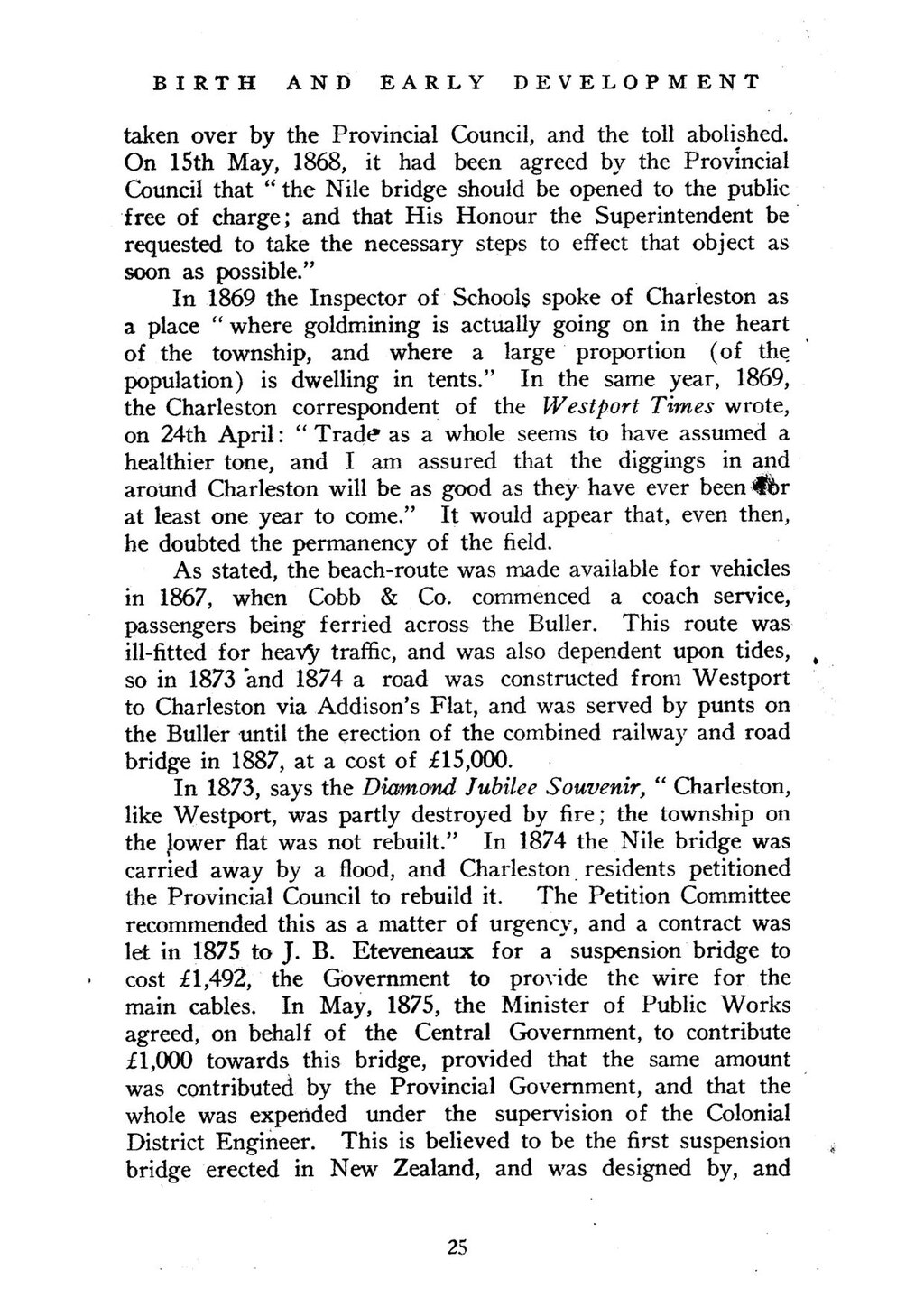BIRTH AND EARLY DEVELOPMENT
taken over by the Provincial Council, and the toll abolished. On 15th May, 1868, it had been agreed by the Provincial Council that “the Nile bridge should be opened to the public free of charge; and that His Honour the Superintendent be requested to take the necessary steps to effect that object as soon as possible.”
In 1869 the Inspector of Schools spoke of Charleston as a place “where goldmining is actually going on in the heart of the township, and where a large proportion (of the population) is dwelling in tents.” In the same year, 1869, the Charleston correspondent of the Westport Times wrote, on 24th April: “Trade as a whole seems to have assumed a healthier tone, and I am assured that the diggings in and around Charleston will be as good as they have ever been for at least one year to come.” It would appear that, even then, he doubted the permanency of the field.
As stated, the beach-route was made available for vehicles in 1867, when Cobb & Co. commenced a coach service, passengers being ferried across the Buller. This route was ill-fitted for heavy traffic, and was also dependent upon tides, so in 1873 and 1874 a road was constructed from Westport to Charleston via Addison’s Flat, and was served by punts on the Buller until the erection of the combined railway and road bridge in 1887, at a cost of £15,000.
In 1873, says the Diamond Jubilee Souvenir, “Charleston, like Westport, was partly destroyed by fire; the township on the lower flat was not rebuilt.” In 1874 the Nile bridge was carried away by a flood, and Charleston residents petitioned the Provincial Council to rebuild it. The Petition Committee recommended this as a matter of urgency, and a contract was let in 1875 to J. B. Eteveneaux for a suspension bridge to cost £1,492, the Government to provide the wire for the main cables. In May, 1875, the Minister of Public Works agreed, on behalf of the Central Government, to contribute £1,000 towards this bridge, provided that the same amount was contributed by the Provincial Government, and that the whole was expended under the supervision of the Colonial District Engineer. This is believed to be the first suspension bridge erected in New Zealand, and was designed by, and
25
